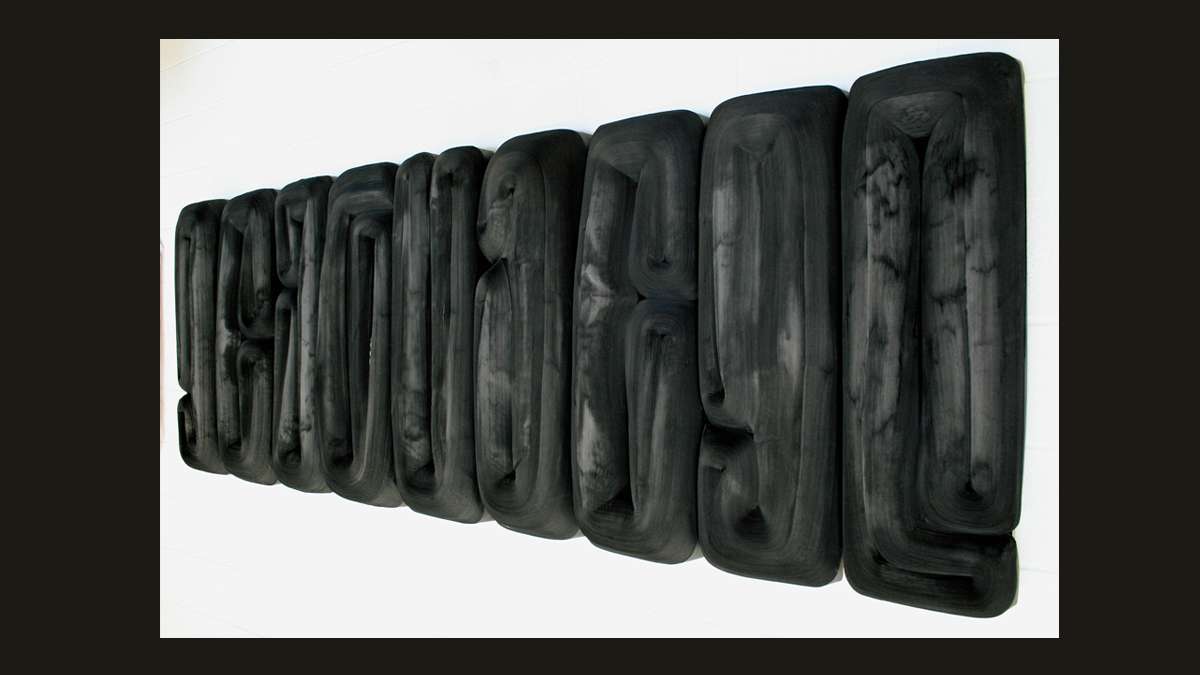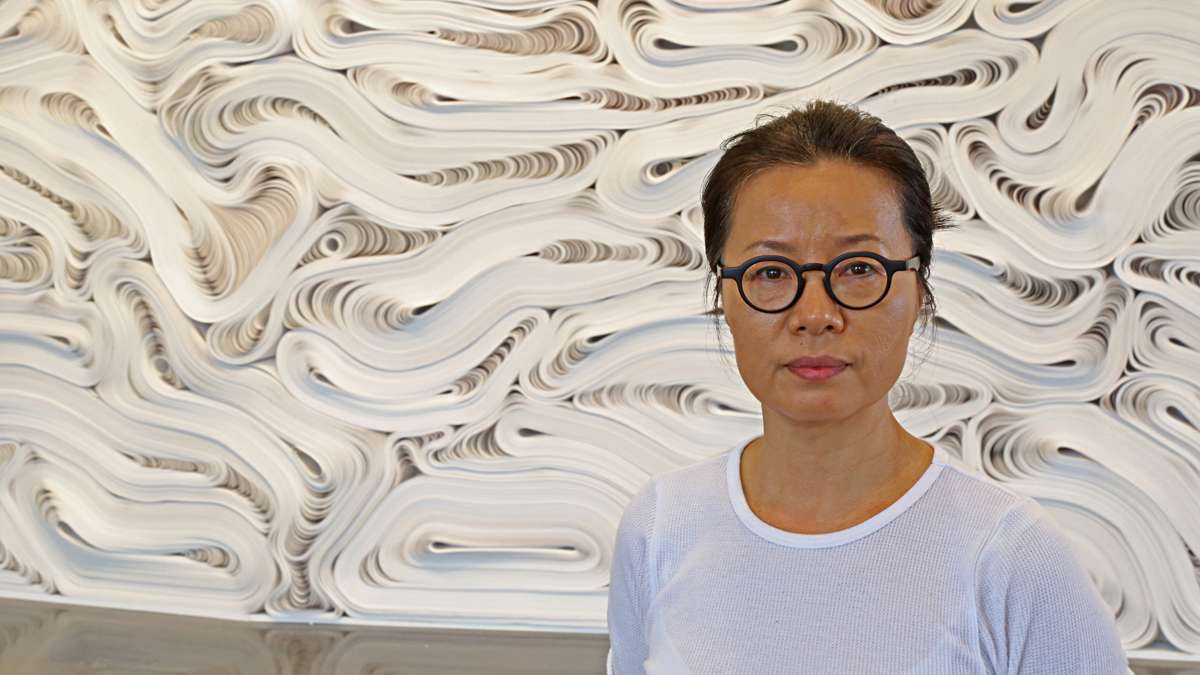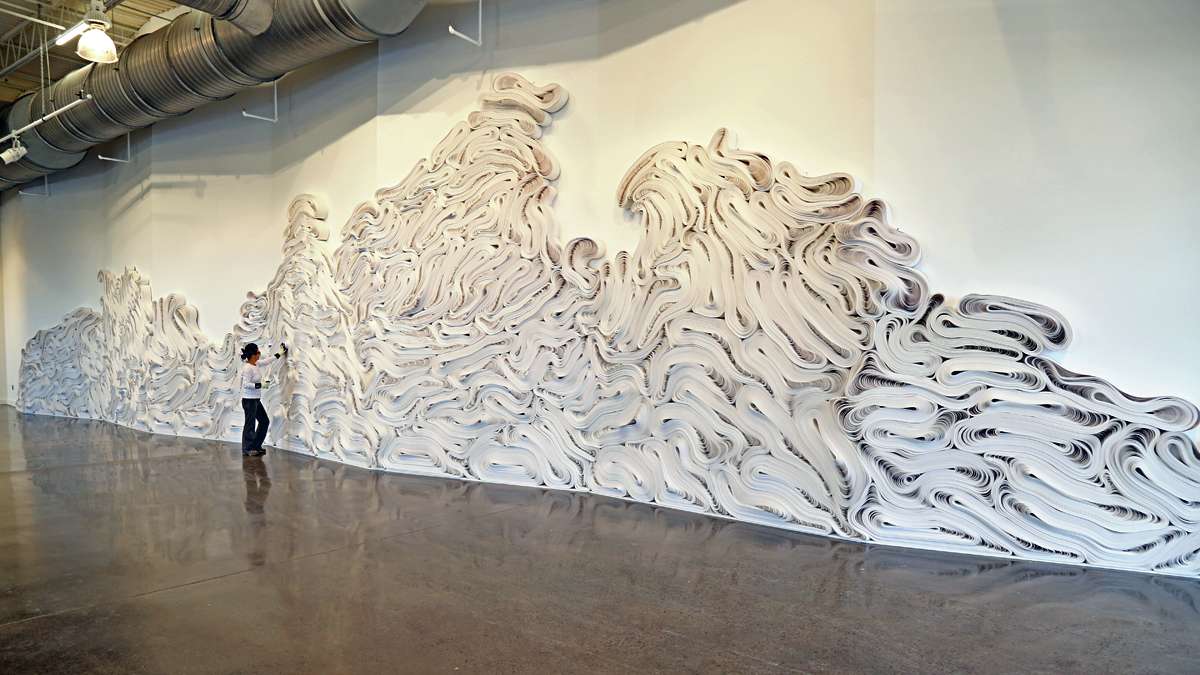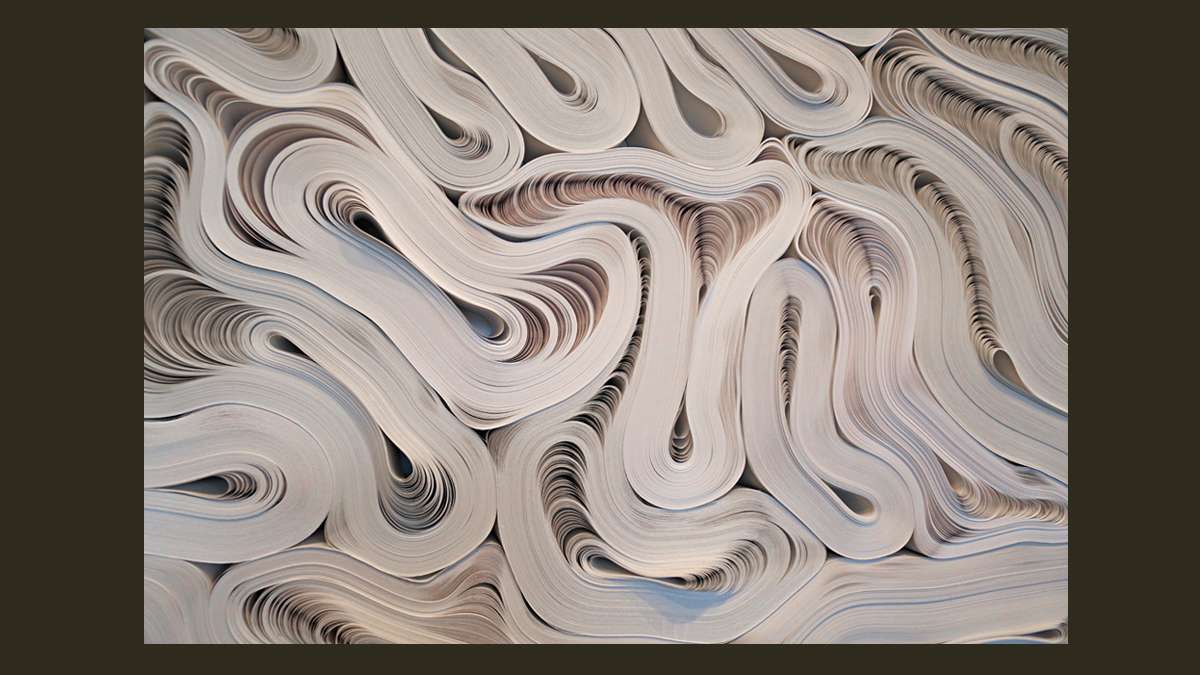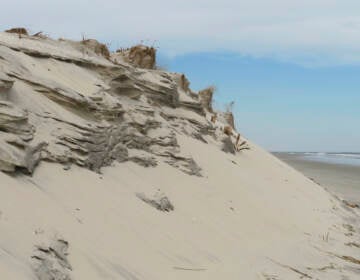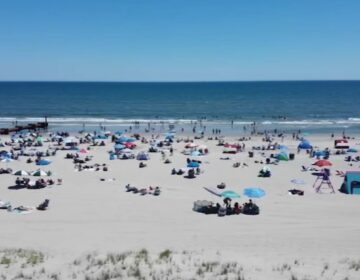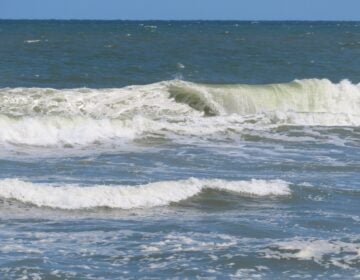On a Roll: Jae Ko unwinds at Grounds For Sculpture
It’s the middle of February, and white is everywhere. Snow blankets the landscape, and inside Grounds For Sculpture’s East Gallery, porpoise-like shapes of paper are unspooling in preparation for Korean-born artist Jae Ko’s commissioned installation. Force of Nature, 白 Shiro, spanning 80 feet, is made from 20,000 pounds of recycled white Kraft paper.
A worker is brushing off dust – it is paper dust, from the blade that cut the paper strips. Ko, who is petite and looks younger than her age – she was born in 1961 – wields power tools with grace, and handles heavy loads of paper as if they were feathers. She directs her team in a way that inspires passion in the project, using math and physics to create works of beauty. Openings form mysterious eyes, scrolls resemble ancient Greek architecture. Whirling dervishes, cobras – it’s all in those paper rolls. There is order in the chaos, and Ko is just as surprised with the results as her team members and viewers.
Visitors to GFS in the shortest month of the year had the chance to watch the installation of the giant undulating shapes of paper, as workers unspooled them to make loose rolls. Taped areas of the walls indicated where the rolls would sploosh, sag and flop. In the end, these are no longer rolls of paper, but something much greater.
“Shiro means white, pure and clear, very glacier like,” says Ko. “The installation is really a glacier cut or sliced to expose the ancient layers within it.”
The paper, which was special ordered to Ko’s specifications by GFS Registrar Faith McClellan, had to be cut to a certain weight to lay properly.
The workers onsite include two of Ko’s full-time assistants, as well as McClellan, a GFS preparator and five art students from The College of New Jersey. “It’s fun working with students,” says Ko. “They get the experience, while I’m managing the moving parts, and I get to look at their artwork.”
Ko’s advice to students: After art school, “be poor and stay in the studio.” She lived her words. After earning an MFA at Maryland College of Art, Baltimore, in 1998, Ko used her student loan to support continued studio time, paying it back three years later. Her studio was in what she describes as a back alley in Washington, D.C. “There were empty stores and sports cars selling stuff – I’d lock the door all the time, and get out of the studio before dark.”
To make her mark she was searching for a material never before used. In grad school she had worked on rice paper, and made installations and books. “I didn’t want to use something you could get in an art supply store. I was experimenting. I would try and try until I could get a conversation going with the material. I would talk with the paper and it would talk back to me.”
That was when she started working with rolls of adding machine paper and cash register tape. She began with small spools, working flat, trying new things. Putting the paper in water, she discovered, expands it and creates new shapes. She added sumi ink to the pool of water, and the results looked like car tires. She was drawing not on paper, but with paper.
When the amount of water she was using became too much for her studio, she went to the ocean and submerged the paper to see how it would be affected by the tides. “It’s unexpected stuff. There were tiny bugs that made amazing drawings. Experimenting this way loosens you up and you feel refreshed.” Among the techniques she’s experimented with include using a hair brush to create layers and line, twisting the tape, using glue, ink and graphite powder for color and reducing surface shine, and using a cover like a book binding.
Ko made several visits to GFS’s East Gallery to create a plan for the site specific Shiro. One of the challenges was working with a wall that was not straight, but undulates like an accordion. “You have to take advantage of what you have, instead of working against it,” says Ko.
While she was visiting, the white snow outside was inspirational. “It is clean, clear, pure, cut up with a glacier feeling,” she says.
Gears, brackets and screws hold Shiro to the wall so it will not collapse. “We had to test how strong the wall and floor would be,” she says. “It has to hold up for a long period without injuring anyone, so we check with engineers.”
Once she came up with the plan, Ko worked with her team on a practice install, teaching the students how to roll the paper tightly or loosely. Pottery wheels have been adapted for spooling the paper onto a lazy Susan.
“Sculptors have to build their own tools,” she says. “The pedal adjusts the speed so you don’t have to push too hard. The turning table is lower on one side so the paper doesn’t get cut.”
Team members who were running spools through the apparatus wore white gloves. Ko was wearing black wristbands to prevent injury. Despite all the heavy lifting, or perhaps because of it, the end result is graceful, beautifully delicate and uplifting – the heavy weight of the paper becomes light.
From her father Ko learned to use tools and she learned to make calligraphy with a brush. Having spent the first 19 years of her life in a city 40 miles south of Seoul, Ko moved to Japan because it was as far away as she could get from her parents while still being close enough to have their permission. She went to three different art schools, went to see her sister in Washington, D.C., in 1988, and decided to stay.
Ko has been working with paper for 30 years. Shiro, funded in part by a $20,000 grant from the National Endowment for the Arts, was inspired by what the artist sees outdoors.
Shiro will be on view at Grounds For Sculpture’s East Gallery beginning March 28 for one year. Ko’s exhibition continues in the Domestic Arts Building, where her black and red stained paper will open May 9.
_________________________________________________
The Artful Blogger is written by Ilene Dube and offers a look inside the art world of the greater Princeton area. Ilene Dube is an award-winning arts writer and editor, as well as an artist, curator and activist for the arts.
WHYY is your source for fact-based, in-depth journalism and information. As a nonprofit organization, we rely on financial support from readers like you. Please give today.


